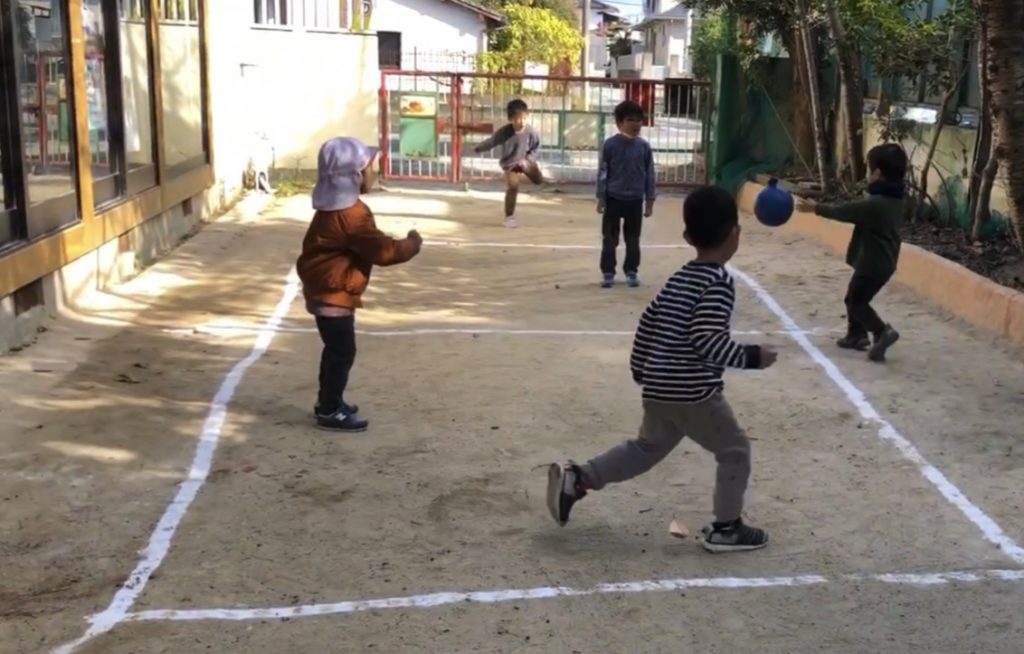「引き算」と「足し算」で課題解決を試みる4歳児

4歳児、5名でドッヂボールを始めようとする姿がありました。いつも一緒にする5歳児たちはクラスの用事でこの時はいません。
最初2人対3人にチームに分かれて始めましたが、途中で「待って!」と言いました。1人の子が「自分達のチームの人数少なかった!」と気づきました。
すると「ここでやっている人が1人が抜けたらいいんじゃない?そしたら人数合うばい」「(4人にして)2・2で分かれたらいいんじゃない?」と意見を言い合いますが、全員で5人いるので誰も納得しません。
すると1人の子が「ドッヂボールやりたい人を入れたらいい!」と言いました。
それを聞いた他の子たちが、「人数ちょっと増やしてくる!」と園庭で遊んでいる友達に声を掛けに行きました。
ドッヂボールの楽しさを知っている子達だったので、自分達でどうにかして始めたいという強い思いがあったのかなと思います。また、5歳児と遊んでいたことから人数が同じでなければいけないと学んでいました。「楽しいドッヂボールするため」の必要感を感じて人数を調整したのかなと思いました。自分達全員が参加でき、2チームが同じ人数になるためには、人数を1人引くではなく、足すことだと気付いた場面でした。(12/15の様子)
4-year-old trying to solve a problem with “subtraction” and “addition”
There was a 4-Year-old, 5 people trying to start dodgeball. The 5-year-olds I usually hang out with are not here at this time due to class errands. At first, we were divided into teams of 2 to 3, but one child said, “Wait!” He realized, “Our team was understaffed!” Then, we exchanged opinions, saying, “Wouldn’t it be nice if one person could leave this team? Then the numbers would match.” However, since there are five people in all, no one is convinced.
Then one of the children said, “Find one person who wants to play dodgeball.”
Other children who heard this went to call out to their friends who were playing in the garden, saying, “Let’s find someone!”
They know from playing with 5-year-olds that the number of players in each team must be the same. The children knew the fun of dodgeball, so I think they tried to solve the problem by making full use of “subtraction” and “addition” from a strong desire to start somehow on their own.
